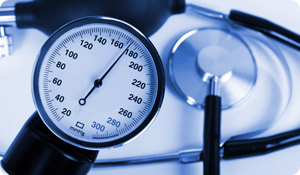
Trying to maintain optimum blood sugar levels is a constant-and often tiresome-balancing act. Both high blood sugar (hyperglycemia) and low blood sugar (hypoglycemia) have health consequences. Recognizing the symptoms of both, and being aware of the health problems that they cause, are important, says Elbert S. Huang, MD, MPH, FACP, assistant professor of medicine at the University of Chicago.
"To avoid diabetic complications, the traditional approach is to lower the blood sugar to as near normal levels as possible," he explains. "But now we're finding out that low blood sugars are as important or more important to patients as high blood sugars." According to Huang, just one severe episode of hypoglycemia could actually lead to dementia later on in life.
High blood sugar levels are associated with a host of complications such as heart attacks, strokes, and kidney problems. A very low blood sugar level can cause a person to be disoriented and even to pass out, which is why it's so important to monitor blood sugar levels before getting behind the wheel.
"When the sugar is too low, the brain does not work," explains Brian Tulloch, MD, an endocrinologist at Park Plaza Hospital in Houston, Texas. "A low blood sugar can leave a person very confused and if it's not treated, the brain can stop working normally."
Patients generally are advised to try to keep their blood sugar between 80 and 120, Tulloch says. A level of about 100 is perfect, while a blood sugar of 50 is too low.
A low blood sugar can occur quite rapidly. With it come discomforting symptoms like shakiness, dizziness, sweating, hunger, headache, confusion, tingling sensations around the mouth, and clumsy or jerky movements, says the American Diabetes Association.
A dangerously high blood sugar level, on the other hand, can take a few days to develop and cause symptoms like frequent urination and increased thirst, according to the ADA. So how can you avoid the swings in blood sugar? Here's how to optimize your levels.
-
Work with your doctor to select an individualized blood sugar control target, advises Huang. The two of you will reach a decision based upon your medical history, age, how long you've had diabetes and whether you have kidney problems, all of which can affect this target level.
-
More frequent blood sugar testing can help you assess whether your medications are working at maximum efficiency, Huang says. Have a regular schedule for testing. And if you feel the symptoms of low blood sugar, check your blood sugar right away.
-
If you feel a low blood sugar coming on but cannot check, remember this simple rule, advises the American Diabetes Association: When in doubt, treat the reaction.
-
If a diabetic passes out from an episode of hypoglycemia, there's also a list of what NOT to do, provided by the ADA. Friends, family members, co-workers or whoever is present should not inject insulin, provide food or fluids, or put hands into the person's mouth. Call for emergency help, and if you have glucagon on hand, inject it into the diabetic, advises the ADA.
Sources:
"Hyperglycemia (High Blood Glucose)" American Diabetes Association. Online.
http://www.diabetes.org/living-with-diabetes/treatment-and-care/blood-glucose-control/hyperglycemia.html
"Hypoglycemia (Low Blood Glucose)" American Diabetes Association. Online.
http://www.diabetes.org/living-with-diabetes/treatment-and-care/blood-glucose-control/hypoglycemia-low-blood.html





